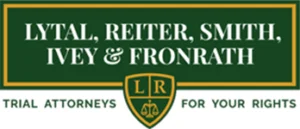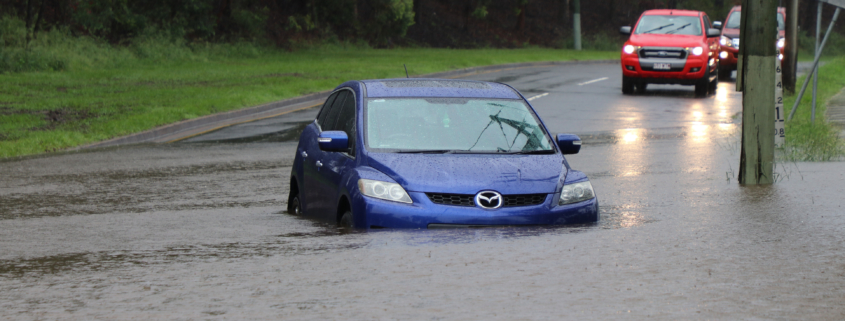When it’s time to purchase a vehicle, many people opt for a used car. Everyone has their own list of things they’re looking for when car shopping, and maybe even a list of things they’re willing to compromise on. One thing they shouldn’t be willing to compromise on is flood damage. It’s unlikely that anyone would knowingly choose to purchase a car with water damage, but the reality is that people purchase used cars with flood damage that they’re not aware of every single day. Below, we’ll discuss how to tell if a used car has flood damage, and what to do about it if it does.
How to Check a Used Car for Flood Damage
Florida is no stranger to floodwater, and it can cause a tremendous amount of damage to a car. It’s important to be vigilant for signs of flood damage when you’re shopping for a car. Some sellers will try to hide the fact that a used car has flood damage, so you should take the following steps before completing the purchase.
1. Run the VIN through Carfax
Whenever you buy a used car, it’s always recommended that you run its Vehicle Identification Number (VIN) through Carfax. Doing this will give you information about the car’s history. In fact, Carfax even has a free flood check option. It’s required for vehicles with flood damage to have a note on the car title, so running the VIN number through Carfax will help you determine whether or not the used car you’re considering has flood damage. If the check comes back positive, avoid it at all costs. It might seem to be running smoothly now, but cars with flood damage are ticking time bombs that will cost you in the long run.
If there’s no mention of flood damage in the carfax report, that doesn’t necessarily mean your car is in the clear. Some people will use loopholes or skirt the rules to avoid reporting flood damage, so you should also use the other methods of checking that are listed below.
2. Check the vehicle’s electrical system
You should check out the car’s electrical system for signs of flood damage as well. Corrosion on areas with wiring is a red flag. Flood damage can also cause certain systems to malfunction, so it’s important to check all of them. You might not think a problem with the radio or turn signals could be a result of flood damage, but they certainly can be. Floodwater can fry the electrical system, causing the car’s other systems to stop functioning properly.
Cars with flood damage usually have a slow (but imminent) death, so you never know when the next system will fail. This is the main reason to be wary of small malfunctions. Because it might just be the radio malfunctioning today, but if there’s flood damage, it could be your brakes or power steering going out tomorrow.
3. Check carefully for rust and other indicators that the vehicle was submerged.
Evidence of rust, even if it’s here and there, could be an indicator that the vehicle was submerged in water. Check the door handles, the pedals, under the hood, and around the trunk for traces of rust. Buyers should also beware of other potential signs of flood damage, including a musty interior smell, mismatched interior upholstery that suggests replacement, and fog or moisture in the lights and instrument panel. If the carpets are damp, that’s an obvious sign that there has been standing water inside the vehicle. Some upholstery shows clear signs of flood damage with present water stains. Others may seem a little too good to be true with new carpet or headliner. It’s possible that the damaged upholstery was replaced to hide the flood damage.
4. Look for sand and dirt in places where people usually don’t clean
You should also check underneath the seats, beneath the pedals, and inside the glove compartment for sand, dirt, or mud. These are some places that people don’t usually clean, and therefore are more likely to have evidence of damage. If you see sand or dirt that looks different than normal wear and tear, it could be a bad sign. Don’t assume it’s sand from a beach trip, because it could be a sign that the car was submerged in floodwater.
How We Can Help Find Who’s Responsible for Selling You a Car With Undisclosed Damage
So we’ve taught you how to check a used car for flood damage, but what if you already bought the car and are just now learning that your vehicle is damaged? We can help you find who’s responsible for selling you the car with undisclosed damage to help you make things right. Here are two ways we’ll help you get to the bottom of this unjust situation:
1. Follow the chain of title
First, we’ll investigate the exchanges of the title over the years to track down when the car was damaged and who owned it at the time. That person had a responsibility to report the flood damage and didn’t. But that’s not always where the buck stops. Sometimes, a subsequent owner may have been or becomes aware that the car had flood damage, and kept that information hidden so they could sell the car and make money off of it. So sometimes there is more than one person to blame for covering up flood damage in a vehicle. We follow the chain of title and identify all those who are responsible.
2. Investigate the insurance company that paid a claim on the vehicle.
If the owner of the car at the time of the flood damage had insurance, then they more than likely filed a claim with their insurance company to repair the damage. If that was the case, we’ll track down the insurance company that paid a claim on the vehicle. Why? If they covered the repairs, then they know the full extent of the damage done to the car by floodwater. They also may have been negligent in reporting the flood damage, so they could also be to blame for this damaged vehicle exchanging hands without disclosing a history of flood damage.
Think you were sold a car with undisclosed flood damage? We can help.
Were you sold a car that you think has undisclosed flood damage? Don’t worry, we can help. The experienced Florida product liability attorneys at Lytal, Reiter, Smith, Ivey & Fronrath can get to the bottom of who’s to blame and help you hold them accountable. You shouldn’t be stuck with a car that has flood damage that you weren’t aware of. Whoever covered up the damage and failed to report it can be held liable. Call us at (561) 655-1990 to schedule your free consultation with an attorney.




